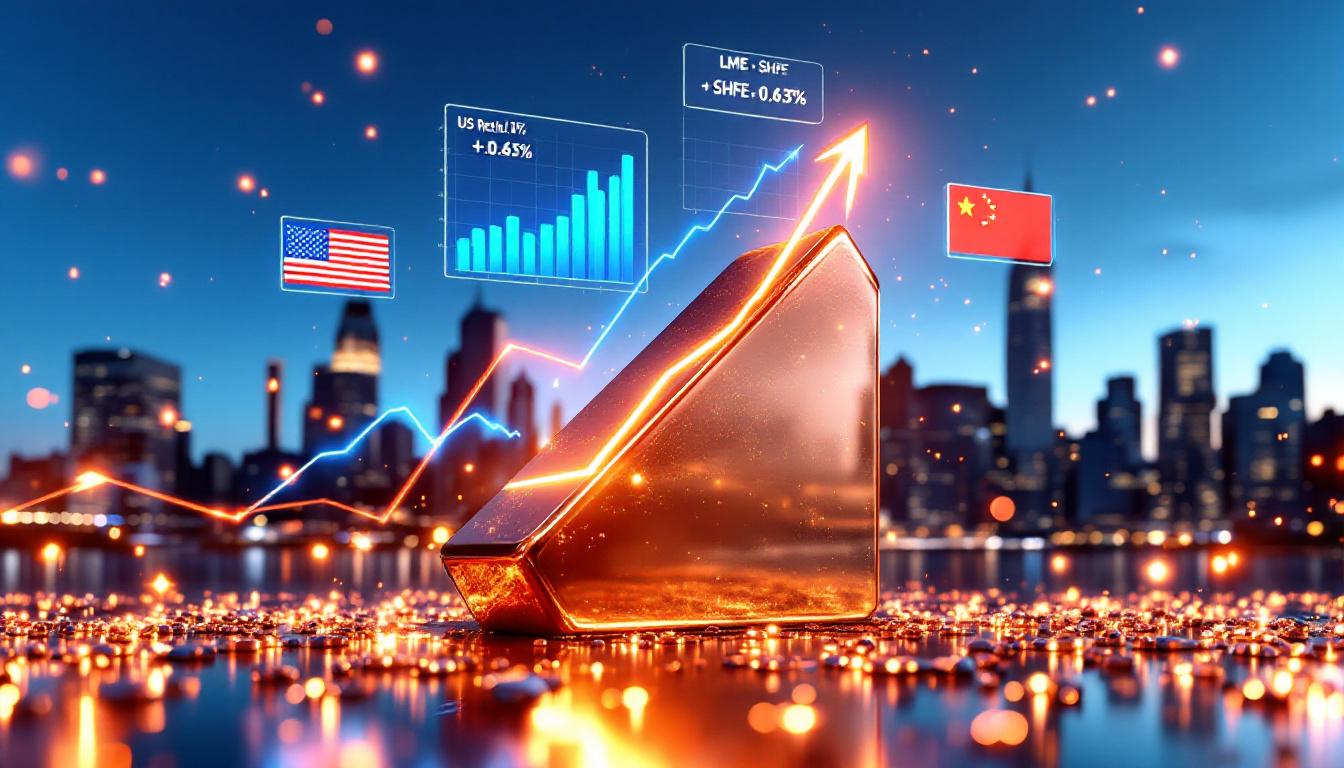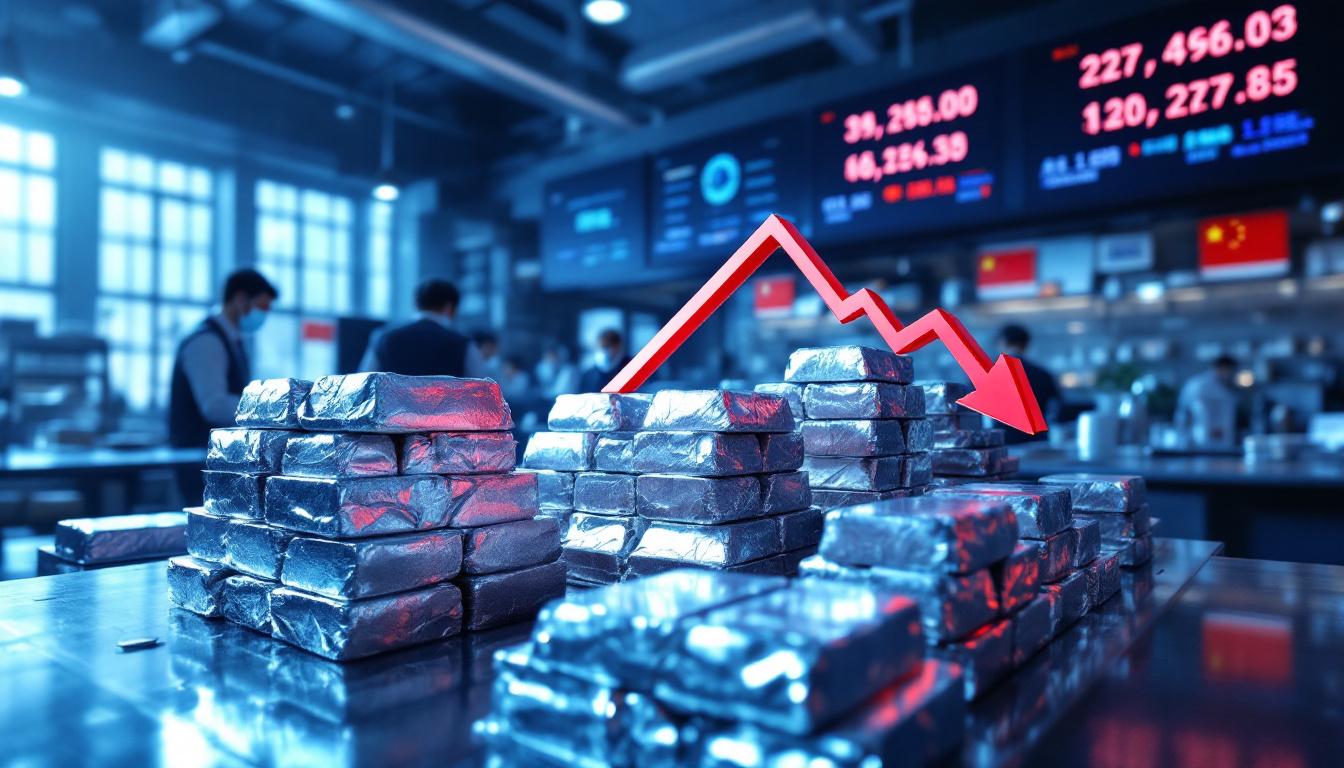What Are Rare Earth Metals and Why Do They Matter?
Rare earth metals comprise 17 elements on the periodic table that, despite their name, are relatively abundant in the Earth's crust. However, they rarely occur in concentrated, economically viable deposits. These metals have become essential to modern technology due to their unique magnetic, luminescent, and electrochemical properties.
China dominates the global rare earth landscape, holding approximately 37% of global reserves according to the U.S. Geological Survey (2023) and producing roughly 70% of global supply—an estimated 210,000 metric tons in 2023 alone. This concentration of resources has significant strategic implications for countries worldwide.
As Dave Franklin of Argonaut Natural Resource Fund noted in May 2024, "China has deliberately depressed prices to deter non-Chinese projects," creating a challenging environment for companies attempting to develop alternative supply chains.
The Strategic Importance of Rare Earth Elements
Rare earth elements (REEs) have become critical components in numerous high-tech applications across multiple sectors:
-
Defense technology: Missile guidance systems, radar equipment, and night vision devices (with the U.S. Department of Defense relying on China for approximately 80% of rare earth imports)
-
Renewable energy: Wind turbines (particularly offshore models requiring up to 600kg of rare earth magnets per megawatt) and electric vehicle motors
-
Consumer electronics: Smartphones, laptops, and flat-screen displays requiring miniaturized components
-
Medical equipment: MRI machines, surgical tools, and diagnostic equipment
-
Industrial applications: Catalysts, polishing compounds, and glass additives
The "magnet metals"—neodymium (Nd) and praseodymium (Pr)—are particularly valuable, comprising 80-90% of the economic value in typical rare earth deposits despite representing a smaller proportion of the physical volume (Adamas Intelligence, 2023).
Among non-Chinese producers, Lynas Rare Earths (ASX: LYC) stands out, operating Australia's Mt. Weld mine and a processing facility in Malaysia that produces approximately 6,000 tons annually. The company represents one of the few established Western producers in a market overwhelmingly dominated by Chinese firms.
How Has the Rare Earth Market Evolved?
The rare earth market has undergone significant transformations over recent decades, characterized by extreme price volatility and geopolitical maneuvering. According to Asian Metal (2024), NdPr prices experienced dramatic swings, falling from approximately $150/kg in 2011 to around $50/kg by 2023—a decline directly linked to China's market manipulation.
China's strategy extends beyond mining to processing, where it controls approximately 85% of global refining capacity (Reuters, 2023). This downstream dominance represents an even more significant strategic advantage than its control of raw materials.
China's Dominance and Market Manipulation
China's grip on the rare earth market has been maintained through several deliberate strategies:
-
Production quotas and export restrictions: Periodically limiting exports to control global supply
-
Strategic overcapacity: Maintaining excess production capacity to flood markets when needed
-
Price suppression: Keeping prices artificially low to discourage competition and investment in non-Chinese projects
-
Vertical integration: Controlling each step from mining through processing to manufacturing
As reported by Reuters (2023), "China's overcapacity in processing has suppressed prices to maintain dominance," creating challenging economics for Western companies attempting to establish competing operations. This strategy has effectively deterred investment in alternative supply chains for decades.
Price Volatility and Supply Concerns
The market has experienced extreme price fluctuations with profound impacts on producers:
-
In 2011, prices surged when China restricted exports, briefly making many projects outside China economically viable
-
By 2015, prices collapsed as restrictions eased and Chinese production expanded
-
Recent years have seen renewed price pressure as China has further increased production capacity
This volatility has created severe financial challenges for non-Chinese producers. Lynas Rare Earths, for example, reported a $100 million loss in Q1 2024 due to continued price declines (ASX: LYC filings), highlighting the difficulties of competing in a market where the dominant player prioritizes strategic goals over profitability.
Why Are Rare Earths Attracting Investment Interest?
Despite pricing challenges, several factors have converged to make investment opportunities in rare earth metals increasingly attractive, primarily driven by explosive demand growth and shifting geopolitical priorities.
Growing Demand from Technology and Clean Energy Sectors
The demand outlook for rare earth elements is exceptionally strong due to several converging trends:
-
Electric vehicle growth: Each EV requires approximately 1kg of NdFeB (neodymium-iron-boron) magnets according to Adamas Intelligence (2023), with global EV sales projected to grow at double-digit rates annually
-
Wind energy expansion: Offshore turbines use up to 600kg of rare earth magnets per megawatt (International Energy Agency, 2023), with global capacity additions accelerating
-
Consumer electronics proliferation: Continued growth in devices requiring miniaturized components and improved performance characteristics
-
Defense sector requirements: Increasing military modernization globally, with rare earths essential for defence-critical supply chain
Industry analysts project rare earth demand to grow at a CAGR of 9.8% through 2030 (Grand View Research, 2023), potentially creating severe supply shortages in certain elements. The "magnet metals"—neodymium, praseodymium, dysprosium, and terbium—face particularly acute supply pressure due to their irreplaceable role in permanent magnets.
Geopolitical Factors Driving Investment
The rare earth sector has become increasingly politicized as nations recognize their strategic vulnerability:
-
Western supply chain initiatives: The U.S. Department of Energy is actively funding domestic processing facilities to reduce Chinese dependence
-
Government support programs: The U.S. Inflation Reduction Act (2022) provides substantial subsidies for domestic critical mineral supply chains
-
Strategic partnerships: Government-backed joint ventures between miners, processors, and end-users are creating integrated supply networks
-
Trade tensions: Ongoing friction between China and Western nations has highlighted vulnerabilities in US-China trade strategies
The EU Critical Raw Materials Act (2023) explicitly targets reducing European dependence on Chinese rare earths to less than 65% by 2030, creating significant policy support for European projects and the development of a comprehensive European CRM facility.
What Are the Key Investment Approaches to Rare Earth Metals?
Investors seeking exposure to the rare earth sector have several options, each with distinct risk-reward characteristics and capital requirements.
Direct Investment in Mining Companies
Investing in rare earth mining companies offers potential for significant returns but comes with substantial operational and market risks:
-
Major producers: Companies like Lynas Rare Earths (ASX: LYC) and MP Materials (NYSE: MP) offer established production and revenue streams
-
Development-stage companies: Firms advancing projects toward production, such as Aclara Resources (TSX: ARA), offer higher risk/reward potential as they approach key milestones
-
Exploration companies: Early-stage explorers like Meteoric Resources (ASX: MEI) developing ionic clay projects in Brazil provide maximum leverage to rare earth prices but highest operational risk
When evaluating mining companies, sophisticated investors assess:
-
Project economics: Capital intensity, operating costs, and expected returns across price scenarios
-
Processing capabilities: Access to separation technology and technical expertise in rare earth extraction
-
Strategic partnerships: Secured customers and downstream processing arrangements
-
Environmental permitting: Regulatory timeline and potential obstacles to development
As Sprott Asset Management (2024) noted, "Companies with secured offtake agreements and downstream partnerships have significantly outperformed pure exploration plays in the rare earth sector."
ETFs and Specialized Investment Vehicles
For investors seeking broader exposure with reduced company-specific risk:
-
Sector ETFs: The VanEck Rare Earth/Strategic Metals ETF (REMX) holds a basket of rare earth producers, though Morningstar (2024) reports it maintains approximately 45% exposure to Chinese firms
-
Thematic funds: Clean energy and electric vehicle ETFs typically include some rare earth exposure through supply chain components
-
Commodity-focused funds: Specialized vehicles targeting critical minerals energy transition more broadly
These instruments provide diversification across the sector but may include companies with only partial exposure to rare earths, potentially diluting investment returns during periods of rare earth price strength.
Physical Metal Investment Considerations
Unlike precious metals, direct investment in physical rare earth metals presents significant challenges:
-
Limited market liquidity: No established spot markets or exchanges for physical trading
-
Complex storage requirements: Many rare earth compounds are reactive or require specialized handling
-
Quality verification: Purity standards vary and verification is technically challenging
-
Lack of standardization: No universally accepted forms or specifications for trading
These practical limitations explain why physical rare earth investment remains a niche activity primarily pursued by industrial end-users rather than financial investors, as explained in this guide on rare earth metals investing.
Where Are the Most Promising Rare Earth Projects Located?
Understanding the geographic distribution of rare earth resources helps identify investment opportunities beyond China's borders, with several regions developing significant production capacity.
Emerging Rare Earth Regions
Several regions outside China are advancing potentially significant production centers:
-
Australia: Home to Lynas Rare Earths' Mt. Weld mine and emerging projects in Western Australia and Northern Territory
-
United States: MP Materials' Mountain Pass mine in California contains approximately 1.5 million tons of rare earth elements (MP Materials, 2023) with additional projects advancing in Texas and Wyoming
-
Canada: Vital Metals' Nechalacho project supplies approximately 5% of global NdPr (Vital Metals, 2023), with other advanced projects in Quebec, Saskatchewan, and Northwest Territories
-
Brazil: Ionic clay deposits offering potentially low-cost production, including Meteoric Resources' Pitinga project with an estimated 500,000 tons of total rare earth oxide content (Brazilian Geological Survey, 2022)
-
Africa: Projects in South Africa, Namibia, and Madagascar with significant potential but higher geopolitical risk profiles
Each region offers different advantages in terms of resource quality, infrastructure access, and political stability, with Australian and North American projects generally commanding premium valuations due to their location in stable mining jurisdictions.
Ionic Clay Deposits: A Game-Changing Opportunity?
Ionic clay deposits, similar to those found in southern China, are attracting significant investor attention in Brazil and other regions:
-
Cost advantages: Brazilian projects target production costs of approximately $25/kg versus $40/kg for traditional hard-rock mining (Mining Weekly, 2023)
-
Simplified processing: Extraction via ion exchange rather than complex beneficiation and cracking processes
-
Environmental benefits: Lower energy requirements and potentially reduced waste generation
-
Heavy rare earth content: Often contain higher proportions of valuable heavy rare earths like dysprosium and terbium
As Dave Franklin noted in May 2024, "Brazilian deposits could fundamentally disrupt China's cost structure if successfully developed at scale," potentially reshaping global supply dynamics and pricing power in the sector.
What Technical Challenges Impact Rare Earth Investments?
The rare earth sector faces unique technical challenges that create significant barriers to entry and help explain the persistent dominance of established producers despite attractive market fundamentals.
Processing Complexities and Cost Structures
Rare earth processing is notoriously complex and capital-intensive:
-
Separation complexity: Requires more than 1,000 solvent extraction steps to achieve high purity individual elements (Society for Mining, Metallurgy & Exploration, 2022)
-
Capital intensity: Processing facilities typically cost between $500 million and $1 billion to construct (CRU Group, 2023)
-
Technical expertise: According to MIT Technology Review (2024), "China's 40-year lead in separation technology represents a significant barrier to Western projects"
-
Scale requirements: Economically viable operations typically require processing tens of thousands of tons annually
These factors create substantial barriers to entry and explain why China has maintained its dominance despite the global distribution of rare earth resources. The technical complexity also introduces significant execution risk for development-stage companies.
Environmental and Regulatory Considerations
Environmental concerns significantly impact project development timelines and economics:
-
Radioactive waste management: Processing one ton of rare earths typically produces approximately 1.4 tons of radioactive waste containing thorium and uranium (EPA, 2023)
-
Water usage concerns: Processing requires substantial water resources and creates potential for contamination
-
Permitting complexity: Western jurisdictions typically require extensive environmental impact studies and waste management plans
-
ESG investment screens: Growing investor focus on environmental performance creates funding challenges for projects with significant waste streams
Companies demonstrating superior environmental management, such as Ucore's RapidSX™ technology aiming to cut separation costs by 50% while reducing waste generation (Ucore, 2024), may command premium valuations despite higher initial capital requirements.
How to Evaluate Rare Earth Investment Opportunities?
Successful rare earth investing requires specialized knowledge and analytical frameworks that differ significantly from those applied to more traditional commodity investments.
Key Metrics for Assessing Rare Earth Projects
When evaluating potential investments, sophisticated analysts consider:
-
Basket price calculation: Different deposits contain varying proportions of valuable elements, with NdPr typically contributing 70% of revenue in most projects (Roskill, 2023)
-
Separation capabilities: Projects with integrated separation facilities or partnerships with processors typically command premium valuations
-
Magnet metal focus: Deposits with higher proportions of neodymium, praseodymium, dysprosium, and terbium offer superior economics
-
Balance sheet strength: Lynas' debt-to-equity ratio of 0.3 versus the sector average of 0.7 (Bloomberg, 2024) illustrates the importance of financial resilience in a volatile market
-
Government support: Projects with strategic backing often receive preferential treatment for permits and financing
S&P Global (2023) advises investors to "focus on companies with established offtake agreements to mitigate volatility," highlighting the importance of secured customers in this specialized market.
Risk Management Strategies for Rare Earth Investors
The volatile nature of rare earth markets requires disciplined risk management approaches:
-
Portfolio diversification: Spreading investments across producers, developers, and explorers to balance risk and reward
-
Position sizing: Limiting exposure to early-stage companies proportionate to their risk profile
-
Technical verification: Confirming processing capabilities through independent engineering reports
-
Management assessment: Evaluating team experience specifically in rare earth projects, which differ significantly from other mining operations
-
Geopolitical monitoring: Tracking policy developments in China, the U.S., and Europe that could impact market dynamics
A Porter's Five Forces analysis applied specifically to rare earth projects can provide valuable insights into competitive positioning and long-term profitability potential beyond simple resource calculations.
What Does the Future Hold for Rare Earth Investments?
The rare earth sector is poised for significant transformation over the coming decade as supply chains restructure and technological innovations alter the competitive landscape, providing new investment opportunities in rare earth metals.
Supply Chain Restructuring and Western Resurgence
Major changes are underway in global rare earth supply chains:
-
Western processing capacity: According to Wood Mackenzie (2023), "Western reshoring initiatives could add 50,000 tons of non-Chinese rare earth processing capacity by 2030"
-
Vertical integration: End-users increasingly investing directly in mining and processing to secure supply
-
Japanese leadership in recycling: Japan's Ministry of Economy, Trade and Industry (METI) has established a $2 billion fund specifically for rare earth recycling technologies (METI, 2023)
-
Diversification strategies: Major manufacturers implementing multi-sourcing requirements to reduce dependency on any single supplier
These developments could create substantial investment opportunities in companies positioned to benefit from supply chain restructuring, particularly those with projects in politically favorable jurisdictions that align with Trump's Critical Minerals Order.
Technological Innovations Changing the Landscape
Several technological developments could disrupt the current market structure:
-
Advanced separation technologies: Companies like Ucore developing more efficient extraction processes that could reduce capital requirements
-
Recycling advances: Currently less than 1% of rare earth supply comes from recycling, but the International Energy Agency (2024) projects this could reach 10% by 2030
-
Material substitution: Toyota's 2024 magnet design reduces dysprosium use by 50% while maintaining performance (Toyota, 2024)
-
Thrifting trends: Manufacturers redesigning products to minimize rare earth content while maintaining functionality
Companies at the forefront of these innovations may deliver superior returns regardless of commodity price movements as they capture value through technological differentiation rather than simple resource ownership, according to Britannica's analysis of rare earth markets.
How Can Investors Build a Rare Earth Metals Portfolio?
Creating a balanced rare earth investment strategy requires consideration of multiple factors, including risk tolerance, investment horizon, and sector knowledge.
Balancing Risk and Reward in Rare Earth Investments
Bloomberg (2024) recommends a tiered approach
Want to Spot the Next Major Mineral Discovery?
Discovery Alert's proprietary Discovery IQ model instantly identifies significant ASX mineral discoveries, delivering real-time alerts that help investors capitalise on opportunities before the wider market. Discover why major mineral discoveries can lead to exceptional returns by exploring our dedicated discoveries page and start your 30-day free trial today.




